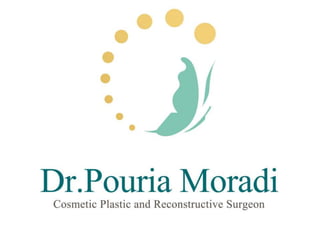
GPs' Guide to Suturing Techniques
- 3. Suturing • The skin edges should always be everted when suturing is complete. • This results in: • Better dermal apposition • Improved healing • A finer final scar.
- 4. Cutaneous suture • The aim of this suture is to accurately appose and evert the skin edges.
- 5. Cutaneous suture • The following may be helpful in achieving this. • When viewed in a cross-section, the suture passage should be triangular-shaped – with its base located deeply as this will evert the wound edges. – A triangular-shaped suture passage with the base located superficially tends to invert the wound edges.
- 8. If in doubt mattress
- 9. If in doubt mattress
- 10. Dermal suture • Most wounds are closed by first opposing the skin edges with a dermal suture. • This reduces the tension on the subsequent cutaneous suture and helps to limit • stretching of the wound. • Use either monocryl (face) or pds
- 11. Dermal suture • The dermal suture should enter the deep reticular dermis on the incised edge of the wound. • It should then pass superficially into the papillary dermis. • The knot should be tied deeply to prevent subsequent exposure of the suture. • This method of suture placement produces good apposition and eversion of the skin edges.
- 21. Cheat stitch • This combination dermal and interrupted suture is helpful with wounds under tension • Especially when you are happy to leave the suture in for 2 weeks and stitch marks not a great concern – Backs, legs, arms
- 29. Fudging! • If one of the wound edges lies lower than the other, the suture should be passed through the cut edge of the skin low on that side (‘low- on-the-low’).
- 30. Fudging! • If one of the wound edges lies higher than the other, the suture should be passed through the dermis high on that side (‘high-on-the- high’) • Passing the suture in this way acts to flatten out any vertical step between the wound edges and ensures that the sides are on a level plane.
- 31. • Fine adjustments can be made by changing the side on which the knot lies – the knot will tend to raise the side on which it lies
- 35. Subcuticular/Intradermal • The suture passes through the dermis, not under the skin. • Should always be there to approximate the epithelium with no tension • The hard work is done by the deep dermals
- 36. Another cheat stitch • Useful for long wounds where you want to save time but still get everted skin edges • Combination of “over and over” and horizontal mattress
- 39. Vicryl • Vicryl is a braided synthetic suture • It loses its strength by 21 days and is absorbed by 90 days. • Its braided nature may make it more prone to bacterial colonization than monofilament alternatives. • It may provoke a significant inflammatory reaction • Don’t use as a dermal suture in the face.
- 40. PDS • PDS is a monofilament synthetic suture composed of polydioxone. • It is absorbed more slowly than either vicryl, monocryl or dexon. • It loses its strength by 3 months and is absorbed by 6 months. • It is primarily used as a dermal suture in areas prone to developing stretched scars.
- 41. Monocryl • Monocryl is a monofilament synthetic suture composed of poliglecaprone 25. • It has similar absorption characteristics to vicryl. • Its monofilament composition may make it less prone to bacterial colonization.
- 42. What suture when? • Sutures that retain their strength for a significant amount of time, such as a PDS, should be used in areas prone to scar stretching, such as the back, legs torso. • Sutures that elicit a minimal tissue reaction, such as monocryl, should be used in the face.
- 43. Face • Kids • Adults – 6.0 fastgut with – Nylon or prolene dermabond glue to • Skin waterproof • 5.0 or 6.0 – Steristrips on top of – Monocryl wound • Dermal • 5.0 – Remove sutures day 5 or 6 – No later as may leave stitch marks
- 45. Scalp • Kids • Adults – Vicrylrapide/vicryl – Staples or any suture – monocryl different colour to patients hair
- 46. Rest of body • Kids • Adults – Same as adults – Depends on extent of wound and depth • Usually dermal pds/monocryl • Interrupted nylon/prolene